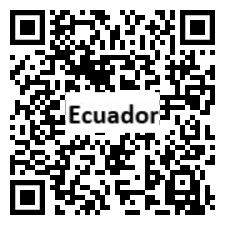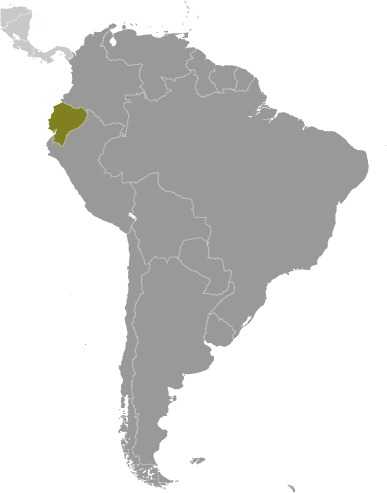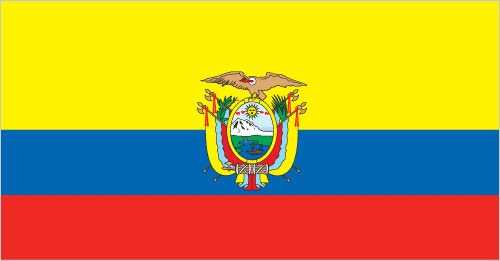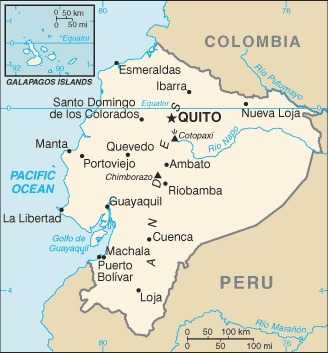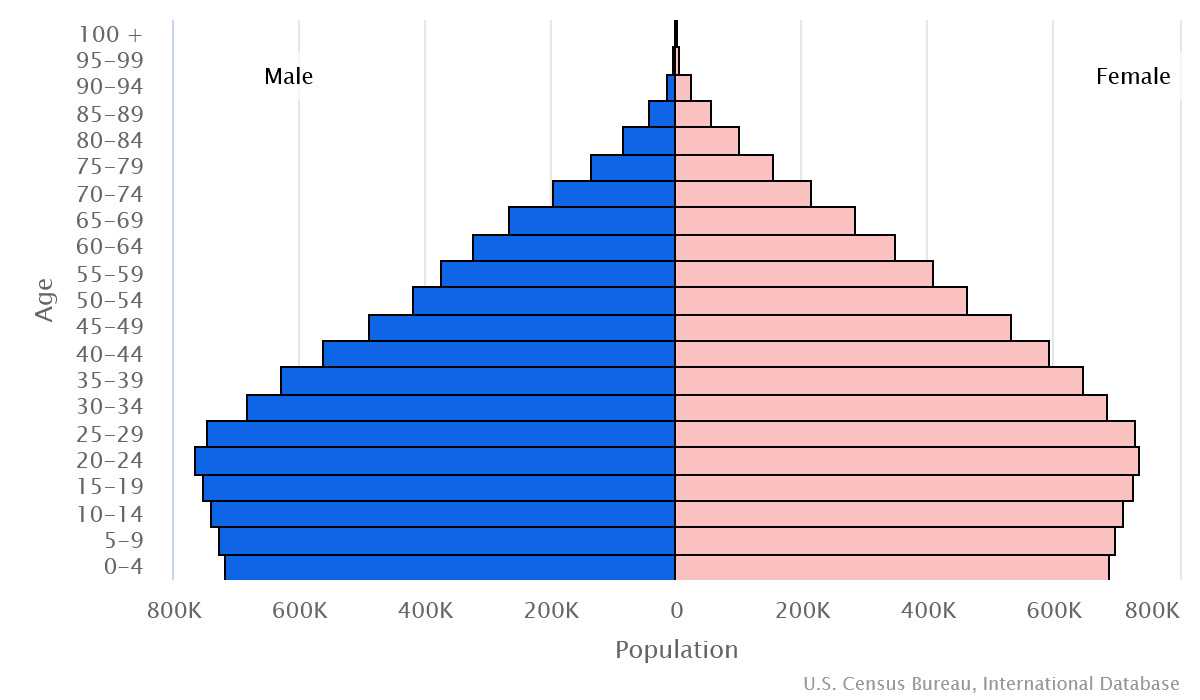Introduction
Background
The region known today as Ecuador was a Spanish colony until 1822 and became an independent republic in 1830. Between 1904 and 1942, Ecuador lost territory in conflicts with its neighbors. The country has been politically unstable for much of its recent history, with 20 constitutions since gaining independence.
Geography
Area
total: 283,561 sq km
land: 276,841 sq km
water: 6,720 sq km
Climate
tropical along coast, becoming cooler inland at higher elevations; tropical in Amazonian jungle lowlands
Natural resources
petroleum, fish, timber, hydropower
People and Society
Population
total: 18,309,984
male: 9,023,170
female: 9,286,814 (2024 est.)
Ethnic groups
Mestizo (mixed Indigenous and White) 77.5%, Montubio 7.7%, Indigenous 7.7%, White 2.2%, Afroecuadorian 2%, Mulatto 1.4%, Black 1.3%, other 0.1% (2022 est.)
Languages
Spanish (Castilian; official) 98.6%, indigenous 3.9% (Quechua 3.2%, other indigenous 0.7%), foreign 2.8%, other 0.6% (includes Ecuadorian sign language); note - (Quechua and Shuar are official languages of intercultural relations; other indigenous languages are in official use by indigenous peoples in the areas they inhabit) (2022 est.)
Religions
Roman Catholic 68.2%, Protestant 19% (Evangelical 18.3%, Adventist 0.6%, other Protestant 0.2%), Jehovah's Witness 1.4%, other 2.3%, none 8.2% don't know/no response 1% (2023 est.)
Population growth rate
0.94% (2024 est.)
Government
Government type
presidential republic
Capital
name: Quito
Executive branch
chief of state: President Daniel NOBOA Azin (since 23 November 2023); Vice President Verónica ABAD Rojas (since 23 November 2023); the president is both chief of state and head of government
head of government: President Daniel NOBOA Azin (since 23 November 2023); Vice President Verónica ABAD Rojas (since 23 November 2023)
Legislative branch
description: unicameral National Assembly or Asamblea Nacional (137 seats; 116 members directly elected in single-seat constituencies by simple majority vote, 15 members directly elected in a single nationwide constituency by open-list proportional representation vote, and 6 directly elected in multi-seat constituencies for Ecuadorians living abroad by simple majority vote; members serve 4-year terms); note - all Assembly members have alternates from the same party who cast votes when a primary member is absent, resigns, or is removed from office
Economy
Economic overview
highly informal South American economy; USD currency user; major banana exporter; hard hit by COVID-19; macroeconomic fragility from oil dependency; successful debt restructuring; China funding budget deficits; social unrest hampering economic activity
Real GDP (purchasing power parity)
$195.477 billion (2022 est.)
$189.88 billion (2021 est.)
$182.165 billion (2020 est.)
Real GDP per capita
$10,900 (2022 est.)
$10,700 (2021 est.)
$10,400 (2020 est.)
Agricultural products
sugarcane, bananas, oil palm fruit, milk, maize, rice, plantains, chicken, cocoa beans, pineapples (2022)
Industries
petroleum, food processing, textiles, wood products, chemicals
Exports
$35.92 billion (2022 est.)
$29.037 billion (2021 est.)
$22.373 billion (2020 est.)
Exports - partners
US 27%, China 17%, Panama 14%, Chile 4%, Colombia 3% (2022)
Exports - commodities
crude petroleum, shellfish, bananas, fish, refined petroleum (2022)
Imports
$36.051 billion (2022 est.)
$28.128 billion (2021 est.)
$19.874 billion (2020 est.)
Imports - partners
US 26%, China 23%, Colombia 6%, Peru 4%, Brazil 4% (2022)
Imports - commodities
refined petroleum, coal tar oil, cars, natural gas, soybean meal (2022)
Page last updated: Tuesday, May 07, 2024
